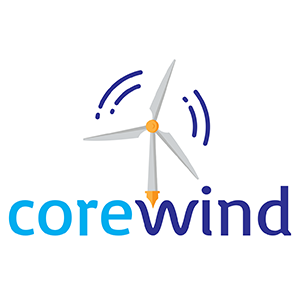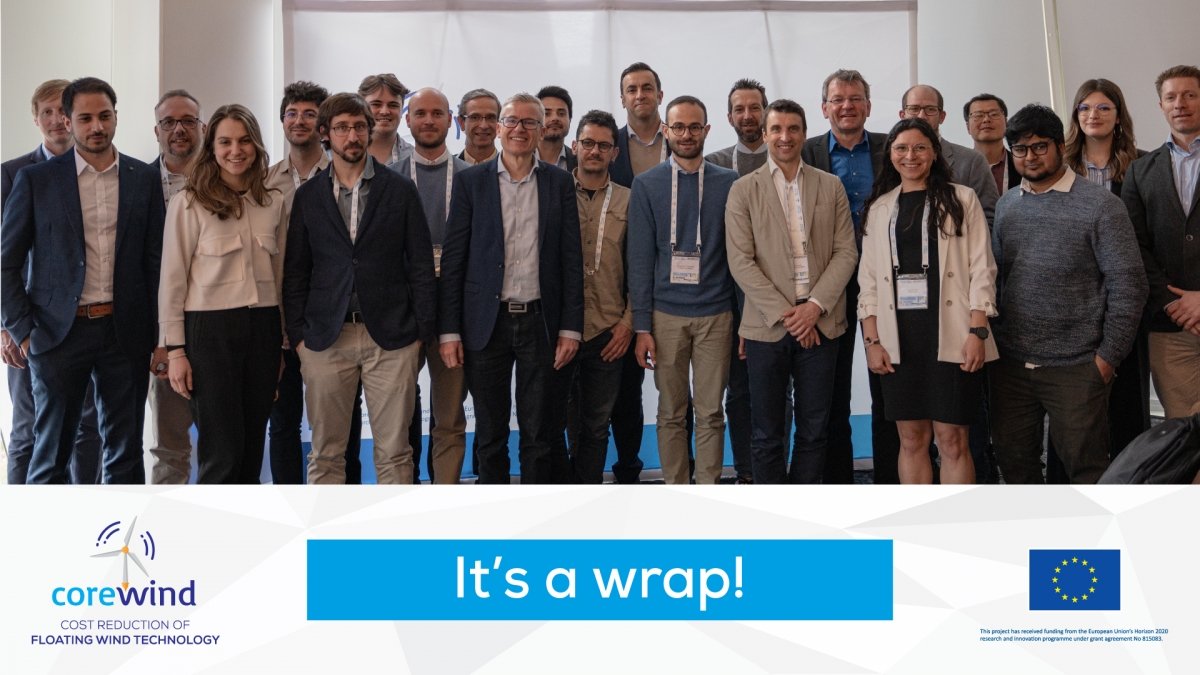Today, 80% of offshore wind potential is located in waters deeper than 50 metres. Floating offshore wind has the potential to tap into these offshore wind resources. To become climate-neutral by 2050, Europe needs up to 150 GW of floating offshore wind. This is feasible but cost-efficiency is still a key issue for floating wind to deploy in Europe. The COREWIND project therefore aimed at achieving significant cost reductions and enhancing performance of floating wind technology through innovation and optimisation at all phases of a project’s lifecycle (design, choice of components, operations & maintenance).
On April 25, during the project’s final event in Copenhagen, COREWIND partners announced they achieved a cost reduction between 11% and 18% for floating offshore wind technologies (depending on the scenario and site conditions analysed).
The coordinator of the project, Jose Luis Domínguez García (Head of Power System Group in IREC), mentioned, “We are really proud of what has been achieved; since we have developed several impactful innovations tackling different aspects and components from floating wind that lead to cost reduction but also minimisation of the environmental impact. We consider that COREWIND is a great success and a reference project in the sector.”
In total, 155 participants (79 in-person and 76 online) joined the COREWIND final event to hear about the innovative solutions that helped achieve this final cost reduction. These solutions include, for example:
- Optimised designs of two floating sub-structures (concrete spar and semi-sub) for 15 MW floating wind turbines in farms;
- Solutions to optimise the mooring design including an optimisation tool and the analysis of several innovations such as shared anchors or shared mooring lines;
- Analysis and comparison between different cable system configuration options;
- Solutions to optimise Operations & Maintenance strategies such as major component exchange strategies, impact of using crane vessels, self-hoisting crane;
- More than 135 experimental tests carried out to validate the solutions including wind tunnel and basin tests;
- The “FowApp” application which allows to calculate the full Levelised Cost of Energy and the Life Cycle Assessment of an asset from cradle-to-grave.
In total, more than 25 exploitable results have been identified within the project including product services but also transferable knowledge.
The COREWIND final event was organised in parallel with WindEurope’s annual event 2023. This was the perfect opportunity for the project partners to meet with some of the key actors of the wind industry who showed significant interest in the COREWIND solutions.
The event was also the occasion to create synergies with other EU-funded projects focusing on floating wind Research & Innovation. The AFLOWT and FLOATECH projects joined COREWIND in a panel to discuss the similarities between their projects and how to accelerate the commercialisation of floating wind technologies. As a common next step, panellists agreed: “We need, as soon as possible, open data to validate these optimised designs and tools so they are ready to be used by the industry.”
All the COREWIND results and publications are available on the COREWIND website here and on the Zenodo platform here.
Any question? Please contact [email protected]

